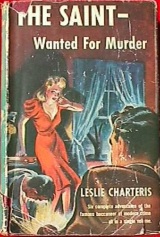Ring A Ding Ding
I have spotted Buster Keaton in a number of talking pictures later in his career when he showed up as a supporting player, but I have now had my first silent Keaton experience –and it was a doozy. I have yet to really delve into the major comedy acts of the silent era, which is to say I have also only seen Charlie Chaplin in a speaking role. So to my slight surprise, I found The General to be supremely entertaining and funnier than I thought silents could really be.
Keaton as Johnnie Gray, a southerner, operates a train engine called “The General” and has a girlfriend whom he might love second to his train. When the Civil War breaks out, girlfriend Annabelle Lee (Marion Mack), pushes Johnnie to, like her brother and father, enlist in the Confederate army. Seeking his gal’s approval, Johnnie races to the enlistment station and fights to be the first in line, but upon hearing he is a train engineer, those in charge think the small man would better serve the cause in his current position. Annabelle thinks her boyfriend is just a coward and a liar and so tosses him aside.
Later, Union soldiers storm Johnnie’s train when all passengers have exited for a meal break, all except Annabelle, that is. So Johnnie chases after his engine on foot, on bicycle and on those little push carts that move on railroad tracks (whatever they’re called). He eventually reaches the next depot and calls the soldiers stationed there to hop on another train and chase after the enemy. Foolishly, Johnnie forges ahead with only one car attached to the engine, leaving the army behind. An absurd chase ensues with Keaton most famously sitting on his engine’s cow catcher and picking up large wooden debris from the tracks.
When the Union soldiers discover Johnnie’s train is in fact only occupied by the one man, they laugh and stop for the night in the midst of some rain why Johnnie runs away to hide. Unfortunately, he hides in the home where the enemy soldiers will camp. It is only at this point that he even discovers Annabelle has been kidnapped. Heretofore he has just been trying to get his train back. So in the night, Johnnie and his gal escape into the rain and in the morning steal back “The General.” Now it is the northern army that is chasing Johnnie and a host of additional bad and good luck leads our hero to safety and to the South winning a battle against the North.
Buster Keaton performed his own stunts, which in itself makes up a huge amount of this film’s appeal. All of his leaping, falling, climbing, and hauling of firewood is impressive. Obviously with a silent movie, the physical humor reigns supreme, but for some instances, Keaton makes us laugh just with the expression on his face.
There is an impressive scene after Johnnie sets a bridge ablaze when the Union army’s train crosses it and the structure collapses into the river. The scene cost something like $42,000 to film and would remain as a tourist attraction in Oregon where the movie was filmed until the scrap metal remnants were collected for WWII efforts. The battle scene at the film’s end was also responsible for a fire that took over the surrounding woods. Keaton, who also directed, stopped filming so cast and crew could douse the blaze.
Released in 1927, The General came out the same year as the first “talking picture”, The Jazz Singer. By 1929, the sound film era was truly in full swing, thus putting many movie stars unable to adapt to the new form out of work. Keaton, as I mentioned, was not one of them, although his parts would be much smaller as his career went on.
Sources: Bill Hader for TCM, TCM.com
Filed under: Action, Comedy, Romance, Silent, War | Tagged: Buster Keaton, Marion Mack, Ring a Ding Ding |












Leave a comment